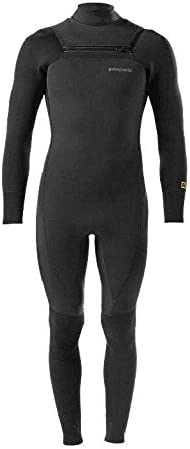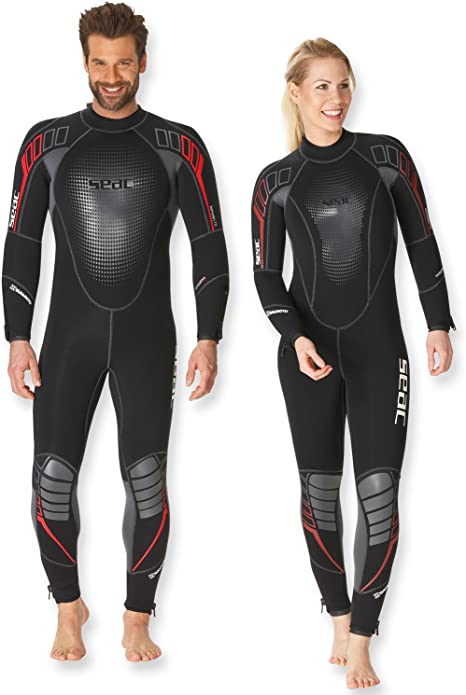The eco-friendly wetsuits are a lifesaver for anyone who wants to spend time in the water, whether it’s surfing, paddleboarding, or just swimming. Eco-friendly wetsuits provide warmth and protect your body from the cold by trapping a thin layer of water between its layers.
That’s why you don’t feel like an ice cube when you get out of the water with one on! But if that sounds like magic – how do they work? And how can we make them better?
What is a wetsuit?
A wetsuit is a common garment by swimmers, surfers and divers. It keeps your body warm in the water, preventing hypothermia and increasing your comfort level.
Wetsuits consist of neoprene or rubber—both of which come from petroleum products. Because they’re using oil materials, they are not biodegradable or recyclable like natural materials like hemp or bamboo.
While it’s true that many wetsuits contain more environmentally friendly materials than their predecessors, there are still ways to reduce your carbon footprint while wearing one (or just being near one).
The Making of a Wetsuit
Wetsuits come from neoprene. Neoprene is a synthetic rubber, which is typically come from petroleum materials. It’s one of the only ways to keep warm in cold water without drowning in your body fat.
The different thicknesses of neoprene used to manufacture wetsuits determine how warm they will keep you. The thicker the neoprene, the warmer (and more expensive) it will be!
What materials are used to make wetsuits?
The materials that make up a wetsuit are neoprene and polyester. Neoprene is using synthetic rubber in wetsuits, while polyester provides the suit with its elasticity and durability. Neoprene comes from oil, but some alternatives use other ingredients including soybeans and castor beans. A source of vegetable oil. The downside to these materials is that they don’t insulate as well as neoprene does. So you’ll have to sacrifice some warmth for comfort!
Start by looking for eco-friendly wetsuits.
Look for one that is made from recycled neoprene.
Neoprene is a synthetic rubber that makes wetsuits, so you might think it would be hard to find one that was eco-friendly. However, there are many options for recycling old wetsuits and making them into new ones. This also means that if you have an old wetsuit lying around, you can give it a new life!
If you want your next set of fins or booties made from recycled neoprene instead of new materials, look online or check out local surf shops; there should be plenty available!
Look for wetsuits without PVC or chlorinated solvents.
Look for wetsuits that come from recycled neoprene. While it’s not a guarantee of quality, a company that claims to use recycled neoprene is at least making an effort to be more environmentally conscious.
Look for wetsuits made partially from plant-based materials. This is the most eco-friendly option and can help you feel good about yourself while out in the water in your wetsuit!
Look for partially plant-based wetsuits.
When you shop for a wetsuit, look for a partially plant-based one. There are a few reasons why this is an eco-friendly choice:
Plant-based materials are more breathable than synthetic ones, allowing your skin to breathe. This will keep you warmer and more comfortable while you’re in the water.
Plant-based materials do not release as much chlorine residue into the ocean as synthetics do. Because they’re less toxic to marine life, plant-based wetsuits have less of an impact on sensitive ecosystems—like coral reefs!
You can buy these eco-friendly wetsuits online
XCEL Mens Comp 3/2mm Fullsuit
This wetsuit comes from recycled neoprene, so you know it’s eco-friendly. It’s also PVC and chlorinated solvents-free, and the material is plant-based. The recycled neoprene is durable and soft, which makes this wetsuit flexible and comfortable to wear. This suit works well for cold water diving and surfing because of its warmth capabilities, but it might not be ideal for warmer climates or waters because of its thickness (3/2 mm).

Vissla 7 Seas Fullsuit
The Vissla 7 Seas Fullsuit comes from recycled neoprene, features a YKK zipper, and has a full front zip closure. It’s also got a 6mm thickness, which makes it ideal for water temperatures between 50 and 70 degrees Fahrenheit. It also contains a 100% recycled nylon lining that’s been treated with an anti-odour formula to keep you smelling fresh in the ocean all day long!

O’Neill Youth Reactor Back Zip Full Wetsuit
For the environmentally conscious person, there’s a lot to love about this wetsuit. It consists of recycled neoprene and PVC and is chlorinated solvent-free, meaning that it won’t be adding to any kind of pollution in your local waterways. Additionally, it consists of a plant-based material as opposed to animal products like rubber or leather.

Patagonia R3 3mm Front-Zip Wetsuit
The Patagonia R3 3mm Front-Zip Wetsuit is the ideal wetsuit for those who want a comfortable suit that won’t hold them back. It features Patagonia’s exclusive Biostretch™ neoprene, which is soft and flexible, allowing you to move freely. The R3 also has a durable chest zip panel for easy on-off as well as an inner leg gusset that gives you more kick.

SEAC Men’s Komoda Yamamoto Wetsuit
This wetsuit comes from 100% recycled neoprene, which helps reduce the amount of new material used in its production. It has a water-resistant coating that will keep you warm and dry when surfing or swimming. The SEAC Men’s Komoda Yamamoto Wetsuit also comes with a back zip, neck gasket, and chest gasket as well as a waist gasket for added comfort and safety. There’s even a front zip so you can get in and out quickly when changing!

Frequently Asked Questions
The lifespan of a wetsuit depends on the material and brand, but most will last between two and four years with proper care. Wetsuits are made from neoprene, which is a synthetic rubber that gives them the flexibility needed to move with your body in the water.
Some wetsuits have longer life spans than others because they have different types of materials inside them. The best way to increase the longevity of your wetsuit is to keep it clean and store it properly after use!
Now that you know about the best eco-friendly wetsuits, it’s time to make sure your old one gets recycled properly. Here are some of the best ways to recycle your old wetsuit:
Donate it to charity: A good way of giving back and helping others is by donating your unwanted clothing. Many local charities will gladly accept donations of used clothes and even resell them in their thrift stores. If you want to make sure your items get a second life as opposed to ending up in a landfill, this is one way of doing it!
Donate it for reuse: Another option for recycling old wetsuits is by donating them directly back into circulation through another user rather than having them end up being thrown away after only one usage! This could mean renting out equipment from universities/colleges etc., but also donating directly to other people who may need some extra gear while surfing somewhere exotic like Hawaii or Australia’s Gold Coast during winter break months.
Yes, you can put your wetsuit in the washing machine. Just make sure you use cold water, a mild detergent, and a gentle cycle. It’s also important to wash it alone and not put it in the dryer. The heat from your washer or dryer will weaken the neoprene, which could lead to tears in your suit.
Conclusion
With so many options out there, picking the right wetsuit for you can be overwhelming. However, you should always look for one that comes from recycled neoprene. Look for wetsuits without PVC or chlorinated solvents!
If you want to go even more environmentally friendly, consider a wetsuit made from recycled neoprene. The best thing about these suits is that they are just as safe and comfortable as any other suit on the market. They’re also easy to maintain, so there’s no reason not to buy one!
Worried that your skin might not be moisturized enough after soaking in the seas? We got you, try these sustainable lotions that are good for you and the environment.
- Fashion Forward: Women’s Eco Friendly Dresses for Every Season
- Innovative Eco Friendly Materials for Sustainable Product Design
- Transform Your Life with These Eco Friendly Eco Living Tips
- Essential Eco Friendly Green Holiday Tips for a Sustainable Celebration
- Fun and Safe Eco Friendly Biodegradable Beach Toys for Kids